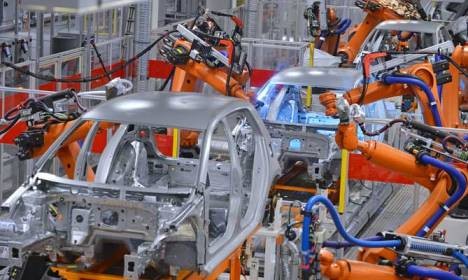The rising demand for robots and automation in many of the world’s factories has started a significant trend in China where the manufacturing industry is slowly being handed over to robots, the Wall Street Journal reported.
China now ranks as the world's largest market for robotic machines, as sales in 2014 grew by 54 percent from a year earlier, and the boom indicated an increasing trend.
The International Federation of Robotics (IFR) said that China is expected to have more industrial robots than any other country by next year.
Economists said that advanced economies use automation as a way to keep industries from moving offshore, which is also one way to reduce labor cost. They said, however, that robots are taking over work in developing countries and reduce the number of jobs in factories in the markets of Asia, Africa or Latin America.
The report said that many economic factors contribute to the emerging trend in China. One of these is labor costs and the new robot technology is cheaper and easier to use than ever before.
In addition, many of China's fastest growing industries rely on automation, as some jobs that include sensitive operations in electronics plants can only be done with machines.
Adams Nager, an economic research analyst at the Information Technology and Innovation Foundation in Washington, D.C. China, said that China is allowing industries to shift out of the country and focus on capital-intensive industries such as steel and electronics where automation has a main role.
According to the IFR, about 225,000 industrial robots were sold worldwide last year, with an increase of 27 percent, and as robot sales grew in all the major markets, more than half of the growth was in Asia.
The group cited China as the rising star, with about 56,000 robots sold in 2014.
The trade group added that the boom in China will continue since it has low robot density, which means it has about 30 robots for every 10,000 factory workers, while Germany is 10 times greater in density.
"China has explosive growth [in robots]," said Henrik Christensen, head of Georgia Institute of Technology's robotics lab, adding that all the world's biggest automation companies are rushing to build factories there to supply demand for new machines.
Terry Hannon, chief business development and strategy officer for Adept Technology Inc., a U.S. robotics maker based near Silicon Valley, said that he was suprised to see 400 new domestic robotics makers at a Chinese trade show last year.
According to the report, some of the businesses who are jumping into the robotics trend include Hon Hai Precision Industry Co. (better known as Foxconn), which announced plans to build and install robots to assemble Apple Inc. iPhones and other products.
Steven Wyatt, head of marketing and sales for ABB Robotics in Zurich, said that China's rapid adoption of robots indicates that the country wants to upgrade and be among the countries in Western Europe and North America that are into robotics.
The report said that it is the reason why the Chinese government is pushing the trend, as it had outlined in 2013 plans to have at least three globally competitive robot makers, eight subcontractor clusters, a 45-percent domestic market share for Chinese high-end robots, and robot penetration to 100 per 10,000 workers by 2020.



























